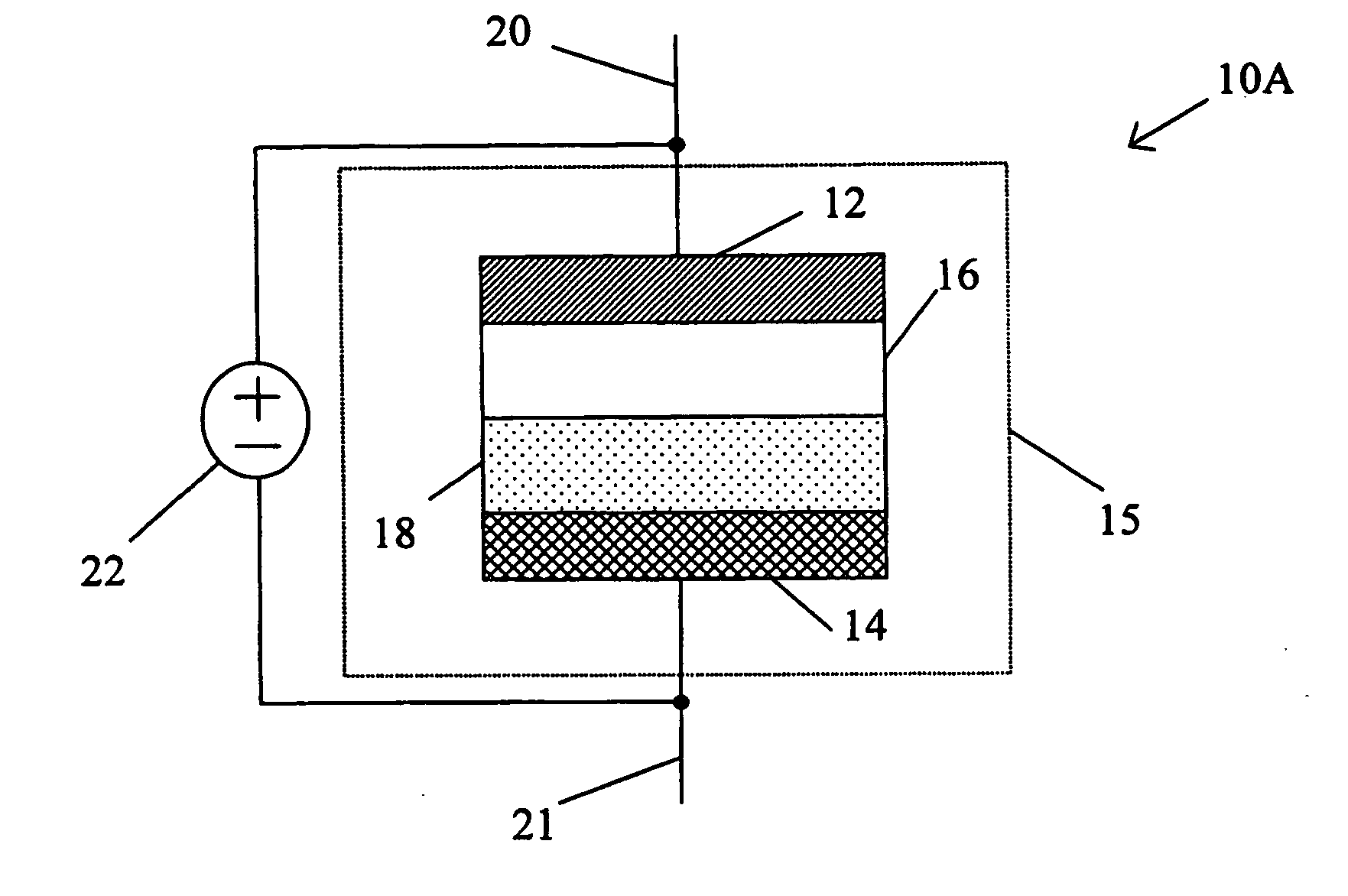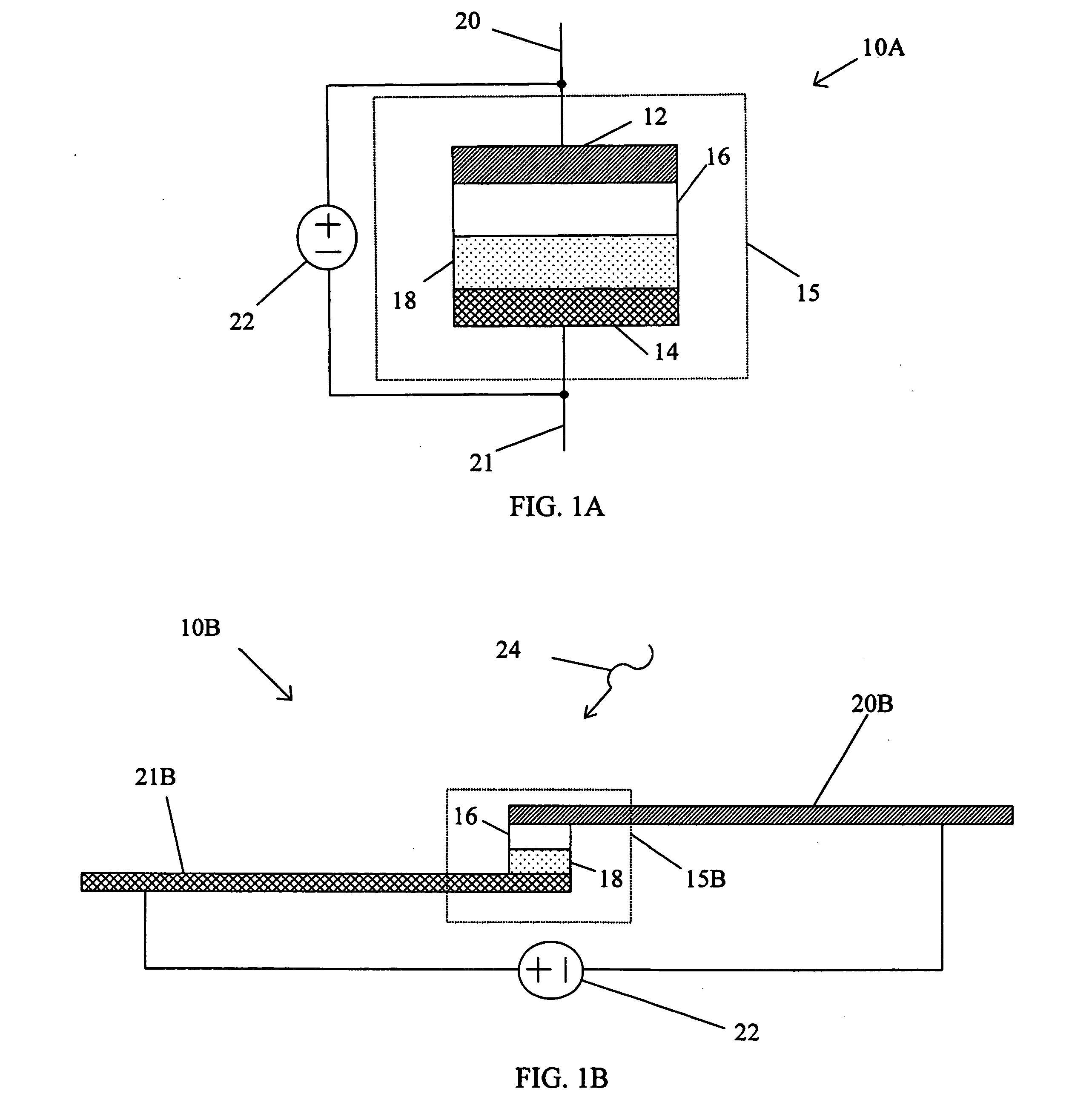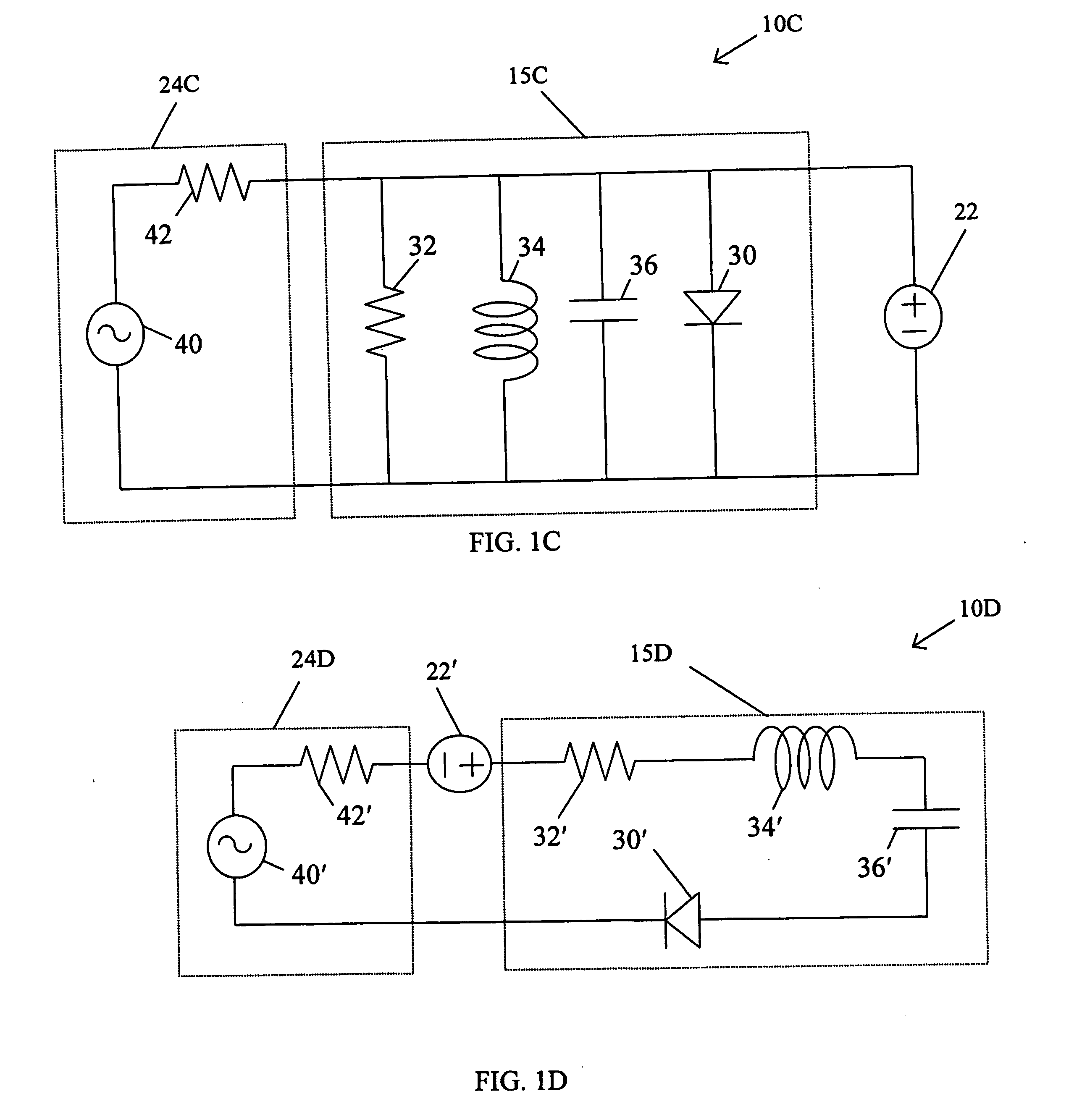High speed electron tunneling devices
a technology of electron tunneling and high-speed, applied in the field of optical devices, can solve the problems of impracticality of semiconductor-based devices, limited efficiency of such devices, and small size of electronic devices
- Summary
- Abstract
- Description
- Claims
- Application Information
AI Technical Summary
Benefits of technology
Problems solved by technology
Method used
Image
Examples
Embodiment Construction
[0037] Still another alternative to the M-I-M, M-I-M-I-M-I-M and MIS devices is disclosed in copending U.S. patent application Ser. No. 09 / 860,988 Attorney Docket Number Phiar-P001 of Eliasson and Moddel (Eliasson), which is filed contemporaneously herewith and is incorporated herein by reference. Eliasson discloses an electron tunneling device based on metal-oxide combinations similar to an M-I-M structure but including additional layer of an insulator positioned between the non-insulating layers. The additional layer of Eliasson is configured to increase the nonlinearity, asymmetry and differential resistance exhibited by the resulting device over and above the values of these parameters exhibited by a simple M-I-M device, which does not include the additional layer. The concept of tailoring the layering of the non-insulating and insulating layers within the electron tunneling device can be extended to achieve heretofore unseen optoelectronic devices such as narrowband detectors, ...
PUM
 Login to View More
Login to View More Abstract
Description
Claims
Application Information
 Login to View More
Login to View More - R&D
- Intellectual Property
- Life Sciences
- Materials
- Tech Scout
- Unparalleled Data Quality
- Higher Quality Content
- 60% Fewer Hallucinations
Browse by: Latest US Patents, China's latest patents, Technical Efficacy Thesaurus, Application Domain, Technology Topic, Popular Technical Reports.
© 2025 PatSnap. All rights reserved.Legal|Privacy policy|Modern Slavery Act Transparency Statement|Sitemap|About US| Contact US: help@patsnap.com



